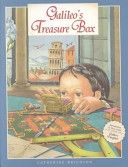
While Galileo sleeps, his young daughter Virginia, later known as Maria Celeste, explores his study and discovers some of the tools he uses in his scientific experiments.

While Galileo sleeps, his young daughter Virginia, later known as Maria Celeste, explores his study and discovers some of the tools he uses in his scientific experiments.
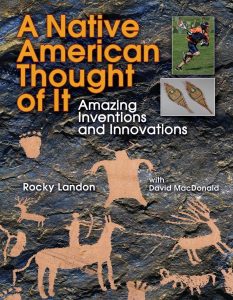 Inventiveness and ingenuity from North America’s First Nations.Everyone knows that moccasins, canoes and toboggans were invented by the Aboriginal people of North America, but did you know that they also developed their own sign language, as well as syringe needles and a secret ingredient in soda pop?Depending on where they lived, Aboriginal communities relied on their ingenuity to harness the resources available to them. Some groups, such as the Iroquois, were particularly skilled at growing and harvesting food. From them, we get corn and wild rice, as well as maple syrup.Other groups, including the Sioux and Comanche of the plains, were exceptional hunters. Camouflage, fish hooks and decoys were all developed to make the task of catching animals easier. And even games-lacrosse, hockey and volleyball — have Native American roots.Other clever inventions and innovations include: Diapers Asphalt Megaphones Hair conditioner Surgical knives Sunscreen.With descriptive photos and information-packed text, this book explores eight different categories in which the creativity of First Nations peoples from across the continent led to remarkable inventions and innovations, many of which are still in use today.
Inventiveness and ingenuity from North America’s First Nations.Everyone knows that moccasins, canoes and toboggans were invented by the Aboriginal people of North America, but did you know that they also developed their own sign language, as well as syringe needles and a secret ingredient in soda pop?Depending on where they lived, Aboriginal communities relied on their ingenuity to harness the resources available to them. Some groups, such as the Iroquois, were particularly skilled at growing and harvesting food. From them, we get corn and wild rice, as well as maple syrup.Other groups, including the Sioux and Comanche of the plains, were exceptional hunters. Camouflage, fish hooks and decoys were all developed to make the task of catching animals easier. And even games-lacrosse, hockey and volleyball — have Native American roots.Other clever inventions and innovations include: Diapers Asphalt Megaphones Hair conditioner Surgical knives Sunscreen.With descriptive photos and information-packed text, this book explores eight different categories in which the creativity of First Nations peoples from across the continent led to remarkable inventions and innovations, many of which are still in use today.
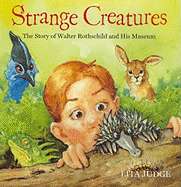
Walter, the son of Lady Emma and Lord Nathan Rothschild, was a very unusual boy. He was born in 1868 to a family of bankers and was nearly the richest boy in the world. But that’s not what made him unusual. Walter was so shy he barely spoke. He had no friends, but he loved every creature that crawled, slithered or flew. At the age of seven he saw his first circus and was inspired to declare breathlessly to his parents: “I’m going to collect animals from all over the world and build a museum and I’m going to call it My Museum!” The family knew explorers who traveled the world to bring back animals for the London Zoo, and soon Walter had his first exotic creatures: several kangaroos. From there his collection grew and grew, until it threatened to take over the Rothschild estate. Lord Rothschild eventually lost patience with Walter’s hobby and insisted that Walter become a banker, like everyone else in the family. Reluctantly, Walter obeyed, but his dream couldn’t be dimmed–he used his earnings to purchase species from undiscovered lands. Eventually Walter created the largest zoological collection gathered by one man and was respected throughout the world for his contribution to science. He wrote 1200 books and scientific papers and named 5000 new species. Animals that now bear the name Rothschild include butterflies, fish, a millipede, a fly, a lizard, a porcupine, a wallaby, a bird of paradise, and even a giraffe. The painfully shy boy who never made a good banker forever changed our understanding of the world’s diversity of creatures.
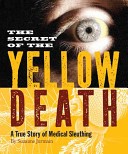
Red oozes from the patient’s gums. He has a rushing headache and the whites of his eyes look like lemons. He will likely die within days. Here is the true story of how four Americans and one Cuban tracked down a killer, one of the word’s most vicious plagues: yellow fever. Set in fever-stricken Cuba, the reader feels the heavy air, smell the stench of disease, hear the whine of mosquitoes biting human volunteers during the surreal experiments. Exploring themes of courage, cooperation, and the ethics of human experimentation, this gripping account is ultimately a story of the triumph of science.
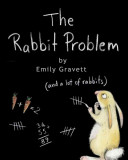
In Fibonacci’s Field, Lonely and Chalk Rabbit meet, snuggle together, and then spend a year trying to cope with their ever-increasing brood and the seasonal changes that bring a new challenge each month. Presented in calendar format with one pop-up illustration and other special features.
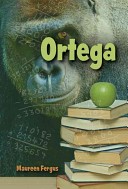
With a thick finger he slowly traced the path of a stray raindrop that had landed near the corner of his eye and trickled down his cheek. And he thought to himself that it was probably a very good thing that gorillas didn’t know how to cry. Raised in a laboratory, Ortega might seem nearly human to his scientist-caregivers, but to the children at his new school, a talking gorilla is nothing but a freak. Unless he wants to spend the rest of his life locked in a cage, however, Ortega is going to have to change people’s minds. More than a comic-adventure novel, Ortega asks the reader to reflect upon the limits of science, imagine how it feels to be profoundly different from those around you and, most of all, consider what it really means to be human.
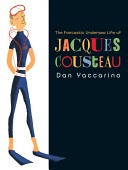
Jacques Cousteau was the world’s ambassador of the oceans. His popular TV series brought whales, otters, and dolphins right into people’s living rooms. Now, in this exciting picturebook biography, Dan Yaccarino introduces young readers to the man behind the snorkel. From the first moment he got a glimpse of what lived under the ocean’s waves, Cousteau was hooked. And so he set sail aboard the Calypso to see the sea. He and his team of scientists invented diving equipment and waterproof cameras. They made films and televisions shows and wrote books so they could share what they learned. The oceans were a vast unexplored world, and Cousteau became our guide. And when he saw that pollution was taking its toll on the seas, Cousteau became our guide in how to protect the oceans as well.
In 1781, Thomas Paine came up with a model for a single-span bridge; in 1887, Adolf Eugen Fick made the first pair of contact lenses; and in 1907, Paul Cornu built the first helicopter. But Leonardo da Vinci thought of all these ideas more than five hundred years ago! At once an artist, inventor, engineer, and scientist, da Vinci wrote and drew detailed descriptions of what would later become hang gliders, automobiles, robots, and much more.

Seven high-school juniors think it will be fun to participate in the Argus program, a new computer program that lets them simulate their tenth high-school reunion, but they find that glimpses into the future can be devastatingly disturbing.